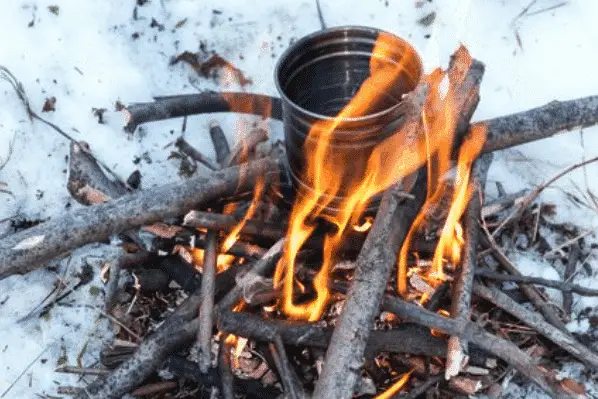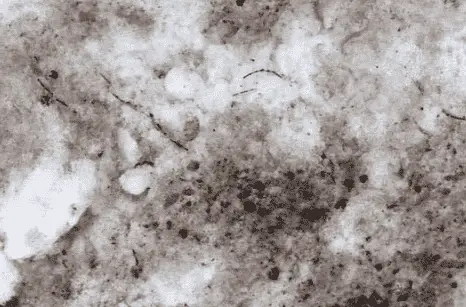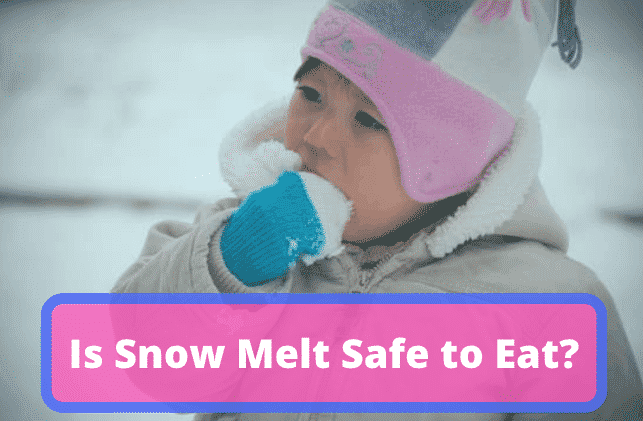With snow everywhere how hard could it be to find water? Unfortunately getting water from snow is easier in theory than reality. Without a stove, you’re relying on mother nature to melt snow for you, but is it safe to drink?
Is snow melt safe to drink? Do you need to boil snow to purify it?
You might want to check out my Ultimate Guide to Winter Water Purification for more information.
Is Snow Melt Safe to Drink?
You wouldn’t think twice about catching a snowflake on your tongue and swallowing it, but is it actually safe to eat snow? As with everything in life, the answer is complicated.
Generally speaking, snowmelt is usually considered safe to drink, but it really depends on the source and a few other conditions. Whether or not it’s safe to drink depends on if you’re willing to take the risk.
Most of the time you’ll be fine, but you may occasionally run into problems. Personally, I would just boil the snow to purify it and probably run it through a filter to get out bigger particles.
Just make sure your water filter doesn’t freeze in the cold. Once a water filter freezes you might as well just throw it away. It can no longer effectively filter water.
Boil Snow if You Can

If you have access to a stove you should always boil snow before ingesting it. Boiling water or running it through a purifier is the only way to guarantee the water is safe to drink.
However, you might not have access to a stove and pots/pans in emergency situations. Just keep in mind that water is ten times as dense as snow. So for 1 Liter of liquid water, you need to consume 10 Liters of snow. You would need to eat a 5-gallon bucket of snow each day(that’s not going to happen).
Eating a little bit of snow might be enough to cure a dry mouth, but it’s not going to be enough to survive. You’ll need to melt a serious amount of snow to survive an emergency situation.
First Snow is Safer
It is generally safe to eat the first snow of the season, but there are a few exceptions. You probably shouldn’t eat snow in urban environments with lots of pollution. Though it probably won’t kill you, it’s better to be safe than sorry.
Out in rural areas it’s usually safe to eat/drink snow early in the season. Snow is just crystallized water which makes it purer than other types of precipitation.
It’s basically just frozen distilled water so it’s safe to drink(until it isn’t). As snow falls, it might even be safer to drink than the water coming out of your tap. It really just depends on where you live.
How to Collect Snow That’s Safe to Ingest
Try to collect the freshest snow you can find. Fresh snow is the least likely to contain contaminants. Ideally, you should collect snow right as it falls, because that’s going to be pure.
If you can’t collect fresh snow right as it falls take a bowl/pan and scoop off the top layer. Be sure to use the freshest snow you can find because it’s least likely to have contaminants.
When Shouldn’t You Eat Snow?

For obvious reasons, you shouldn’t eat yellow or brown snow. This snow is obviously contaminated with urine, feces, and dirt(or worse). Red and green colors indicate the presence of algae and chemical runoff. Algae might be safe to eat, but don’t risk it.
Black, brown and gray snow contains grit and grime usually from the road and industrial pollutants. Obviously you shouldn’t eat snow and industrial buildings with toxic fumes and exhaust (usually contains lead, mercury, etc).
Don’t Eat Snow Late in The Season
After a few days/weeks on the ground, snow starts to get a little sketchy. Every day on the ground makes snow less pure. If you really need to ingest snow later in the season do yourself a favor and boil it first.
Just make sure you follow the proper boiling procedures. You need to start off with a few cups of liquid water before you can start melting snow. If you don’t have a few cups of liquid “Seed Water” you’re just going to burn a hole in the bottom of your pot.
Cold Weather Doesn’t Kill Bacteria and Protozoa
Just like us, bacteria and other pathogens don’t do well in cold weather, but that doesn’t mean they go away. It’s just as dangerous to drink un-purified water in the winter as it is in the summer.
Even though bacteria are unable/slow to reproduce in the cold, it still remains dormant until the spring thaw. You can still get sick if you drink water that hasn’t been purified.
This is why re-freezing chicken doesn’t make it safe to consume. Once temperatures rise to the point where bacteria grows freezing it does nothing. Even frozen snow/ice can have bacteria and other pollutants late in the season.



